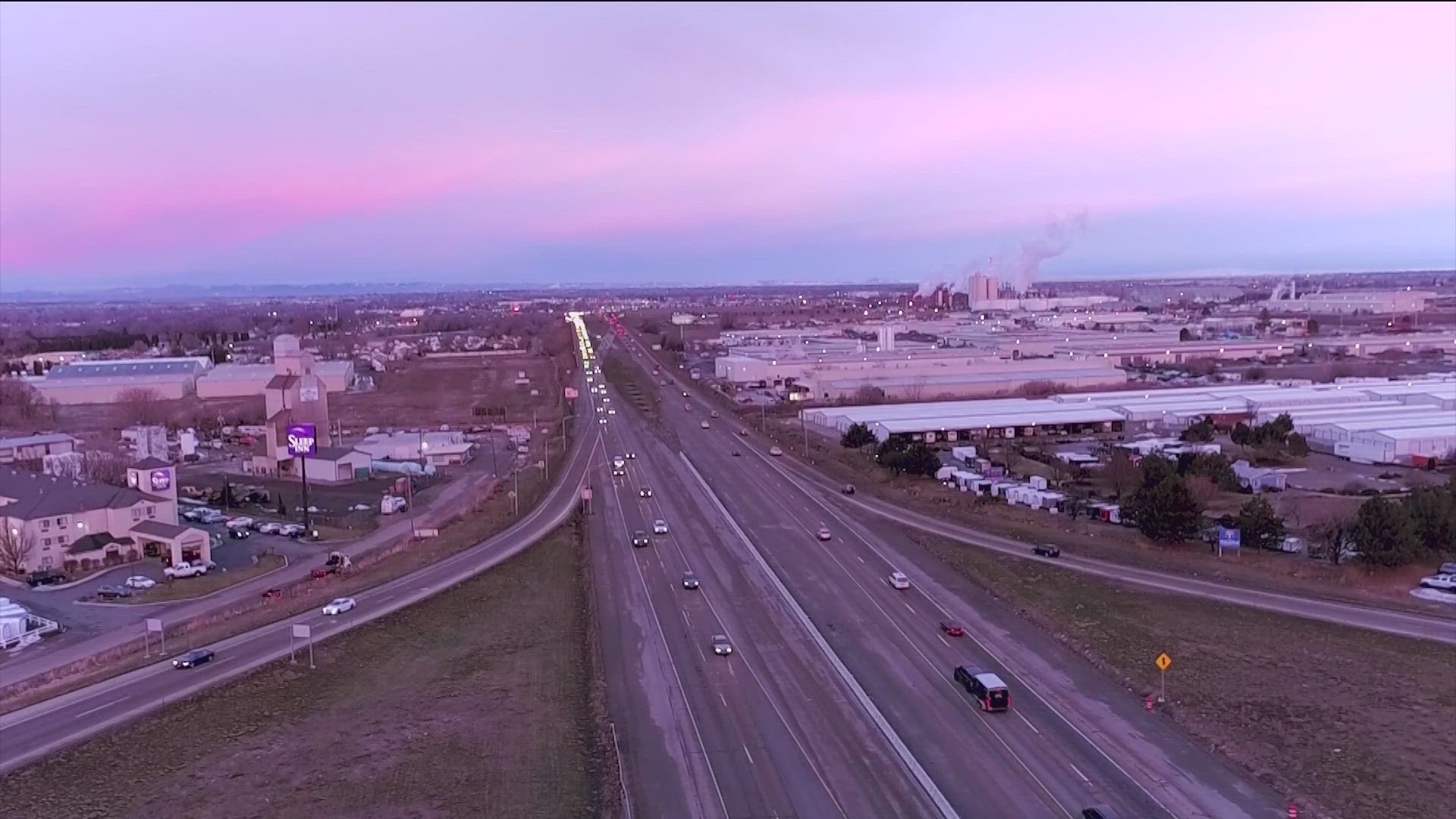BOISE, Idaho — This publication is Part I of a two-part series.
Traffic is bad in the Treasure Valley, although that’s not unique for our area. But it is getting worse. Ada County's population is up 32 percent from 2010. Canyon County's population is up 29 percent in that same time. More people in the Treasure Valley means more cars on the road and worse traffic. And that traffic is not only affecting your patience, but also your bottom line and your safety.
Sarah Larsen is a Senior Branch Office Administrator for Edward Jones. “Traffic has always been a bit of an issue."
She talked to me right outside her office in Meridian, and commutes from Caldwell. She budgets 45 minutes to get there, but says, many days that's not nearly enough, "At least one to two days a week, due to accidents there, the commute will expand to an hour and 15 minutes to an hour and a half."
Larsen remembers a time when you could buzz all around the Valley, even during rush hours, "I've definitely noticed a dramatic change, having been a driver for, dare I say, three decades now. You used to be able to get anywhere in town in 20 to 30 minutes. And that is absolutely no longer the case."
Sarah is not alone. Everyone who has lived here for a decent length of time has seen their commute get longer and more headache-inducing. The most recent local study we have shown the average commute from Caldwell to downtown Boise went from 35 minutes in 2010 to 39 minutes in 2018. The numbers are not necessarily staggering but they do continue to grow.
"The Treasure Valley is becoming a modern metropolitan region," says Steven Peterson, an Associate Clinical Professor of Economics at the University of Idaho.
Peterson says, traffic is more than just a major inconvenience, it's a drain on the economy, "Traffic congestion and inadequate roads, I think you can easily do assessments to show they cost jobs as well."
We don't have those local numbers, but in a recent book from engineer and historian Henry Petroski, he claims traffic delays cost the entire U.S. economy over $120 billion annually. A chunk of that is definitely felt here in Idaho.
But our increased traffic is costing Idahoans more than just jobs and money, according to Idaho State Police Captain Matt Sly, "We place their safety as they drive on Idaho roadways, as top value."
Captain Sly and everyone with Idaho State Police are working non-stop to keep people safe on Idaho's highways. And he says, it's getting much tougher as the population expands, "There has been an increase in speed, impairment, and distracted driving as well."
But there is one thing that's declining, the number of mistakes you can make behind the wheel without getting into an accident. Sly says, "There's a smaller margin of error for a lot of people because you have that many vehicles on the roadway."
A decade ago, there were just over 6,100 crashes in Ada County. That went up to 6,600 by last year. In Canyon County, the spike in crashes was even more dramatic, going from about 2,700 to more than 4,200 by last year. That's a more than 50 percent increase in a decade.
Captain Sly says some of the most serious crashes weren't even on the busiest stretch of road in the Valley, Interstate 84. They were on secondary roads like Highways 20/26 and 44. That's why Sly says ISP is working with local agencies a lot more to just try to keep up and keep the roads safer, "Because if we're expecting one agency to do it, it's too much to do and we have to be able to do this together."
So, traffic has gotten worse and worse, but is there any chance it could get better? Experts like Matt Stoll, the Executive Director of COMPASS, says, “No.” COMPASS is the Community Planning Association of Southwest Idaho. It's a group of local governments working together to plan for the future of the Treasure Valley.
Stoll says, "We're anticipating that there's going to be a 67 percent increase in the traffic volume that we're having by the year 2050."
We're sitting at about 800,000 people living in Ada and Canyon Counties right now. They expect that to grow to 1,300,000 by 2050. Right now, we take about 1.8 million passenger vehicle trips every weekday. That number balloons to 3 million trips every weekday in 2050.
Stoll sums it up, "Your commute is going to get worse than what it currently is, and we're all frustrated right now with how the commute is currently."
So, we're looking at more headaches for drivers, a bigger drain on the economy, and more dangerous roads. Is there anything we can do to help, and maybe make traffic better? Does anyone have a plan to help? COMPASS does. I'll tell you what that plan is next week, if they're making any progress, and the major hurdle they're facing in getting it all done.
Watch more 'Growing Idaho':
HERE ARE MORE WAYS TO GET NEWS FROM KTVB:
Download the KTVB News Mobile App
Apple iOS: Click here to download
Google Play: Click here to download
Watch news reports for FREE on YouTube: KTVB YouTube channel
Stream Live for FREE on ROKU: Add the channel from the ROKU store or by searching 'KTVB'.
Stream Live for FREE on FIRE TV: Search ‘KTVB’ and click ‘Get’ to download.

